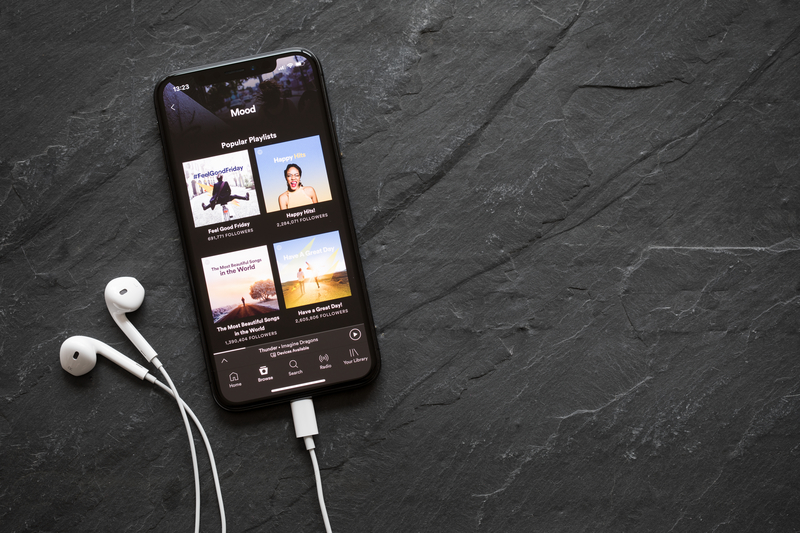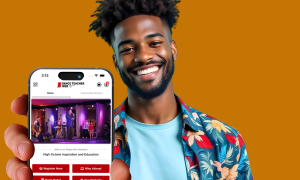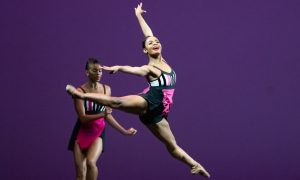Dance and music are inextricably linked. Even during pieces set to silence, everyone’s listening to the sound of the footsteps on stage, or the audience shifting in their seats. Sound and movement just go together.
That’s why finding music that you can use on stage or online without getting flagged for copyright infringement can be so infuriating. How many times have you posted a piece of choreo or improv that you’re really proud of, only to have it taken down or muted because you were jamming to your favorite artist’s newest song? Knowing what you can and can’t use, and how to go about obtaining permissions and licensing, helps. Not only does it protect you, but it ensures that the musician who’s captured your creativity gets the credit and, yes, the compensation they deserve. If there’s one thing we dancers understand, it’s that every artist should be paid for their work.
Obtaining permissions for existing music
Sorry to say, but simply writing “no copyright infringement intended” in the bio section doesn’t cut it. Acknowledging that the music doesn’t belong to you doesn’t make it okay to use as your own, and there’s no magic set of words to absolve fault. But the good news is that obtaining permission still works the same way it did in grade school: you can always just ask. (And it never hurts to say please!)
Let’s say you’re interested in using a specific piece of music for a live dance show. Generally, a recording of a song has two sets of copyrights. The sheet music itself, the melody and lyrics, belong to the artist (often represented by a publisher). The recording of that song belongs to the music label that the artist belongs to. You’ll need permission from both in order to use the recording. To find who you’ll need to get in contact with, check BMI (Broadcast Music Inc.) or ASCAP (American Society of Composers Authors and Publishers). They’re the largest performing rights organization in the U.S., and each have a database of millions of songs, including who owns which rights to each one.
But remember, the more famous the artist and their song are, the more their publisher and their music label might ask by way of licensing fees. Or, more likely, they just won’t respond. For those of us who don’t have a blockbuster budget, we likely won’t be getting performance rights to any Beyoncé.
Posting on platforms that have pre-existing music licensing agreements
There’s no workaround for obtaining permission for live shows, but if you’re intending to post your dancing as a video online (and not planning to profit off of it), YouTube might have a solution for you. Google developed a software called Content ID, which compares the audio and video in content that you upload to audio and video files registered with Content ID. They find matches through a digital fingerprint, of sorts. This is how they catch you when you post something that contains copyrighted material. But the good news is, if the copyright owner gives the go-ahead, YouTube will put an advertisement before your video, and the profits from that ad (or a portion) will go to the copyrighted content’s owner. The original artist gets paid, and you get to keep your video up. However, if the artist whose song you’re using decides they don’t want their work in your video, you’re out of luck. Vimeo uses similar software, called Copyright Match, but they don’t offer to monetize the video through an advertisement.
The Copyright Act and Fair Use
There are some cases in which you don’t need rights to a song in order to use it. The Copyright Act is U.S. law, and the Fair Use doctrine is the argument for exceptions against it. Fair Use dictates that using copyrighted material for commentary, criticism and some other instances is justified. This includes education, so combos in class to the latest hits are safe! While the term “Fair Use” is thrown around a lot, making it stick in court is finicky, to say the least, and judged on a case-by-case basis. Before assuming your work falls under Fair Use, it’s important to familiarize yourself with the Copyright Act and consult an attorney.
Options other than copyrighted music
With all these roadblocks, and with the average dancer’s budget, copyrighted music doesn’t always seem feasible when looking for a song to set your next piece or post to. The good news is, you have plenty of other options.
- Have a favorite local band, or any musically inclined friends? Get in touch with smaller scale musicians who might be interested in teaming up. Maybe they need a dancer for their upcoming music video or would agree to license you one of their songs for a reasonable fee.
- Hunt around university music departments or conservatory programs. Collaborating with a musician and building the sound from scratch can be a really engaging way to approach creating a new piece. Plus, you now have someone to contact for future work as well.
- YouTube and Vimeo have audio libraries full of royalty-free music from their partnerships with specific artists.
- In the U.S., any pieces of music created in 1923 or earlier exist in the public domain. Elsewhere, the rule is between 70 to 75 years after the composer’s death. Works in the public domain are unrestricted by copyright and free to use by everyone!
- Feel free to fall down the SoundCloud rabbit hole. It’s full of artists who are actively creating and might be easier to get in touch with than your average pop star.
- There’s nothing keeping you from mixing your own music. With all the programs out there, making soundscapes and simple beats has never been easier.
By Holly LaRoche of Dance Informa.













